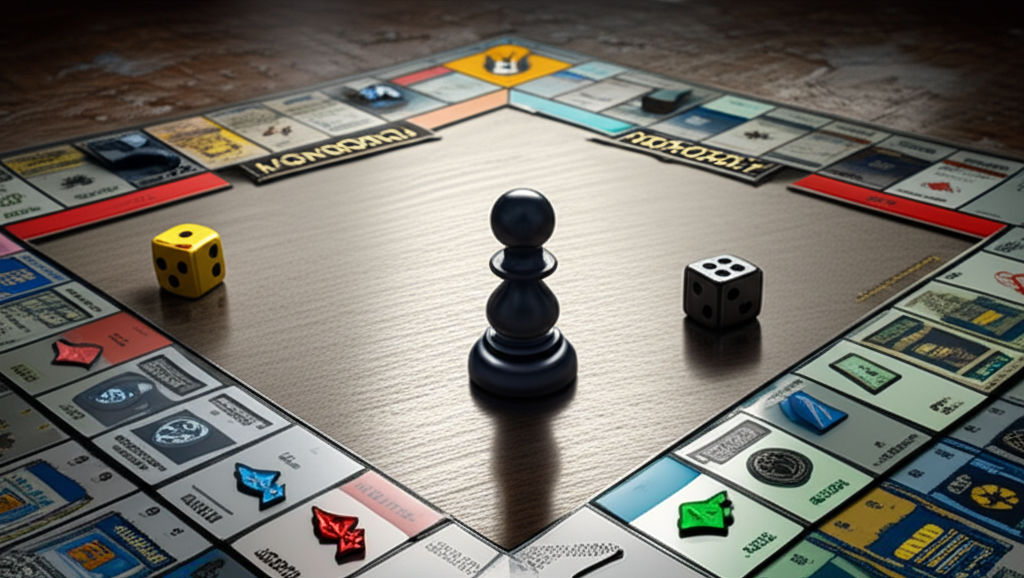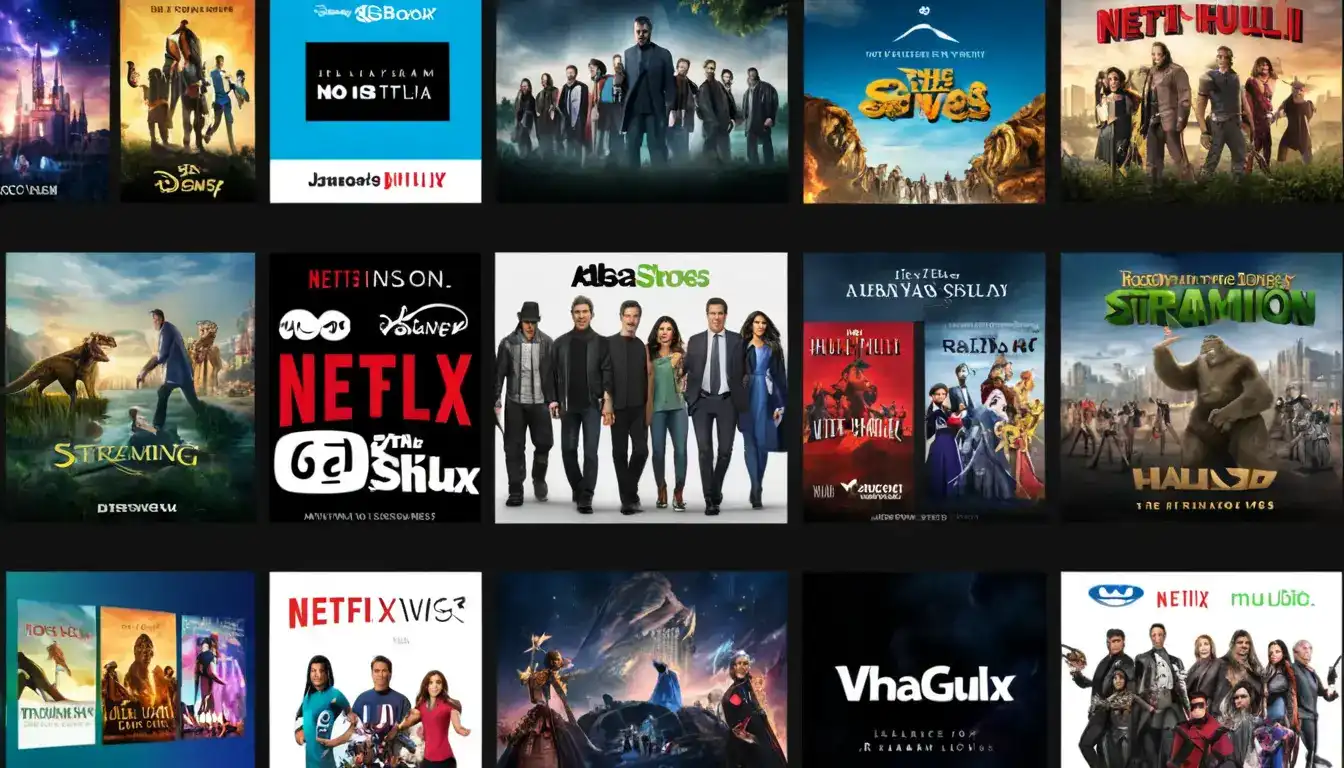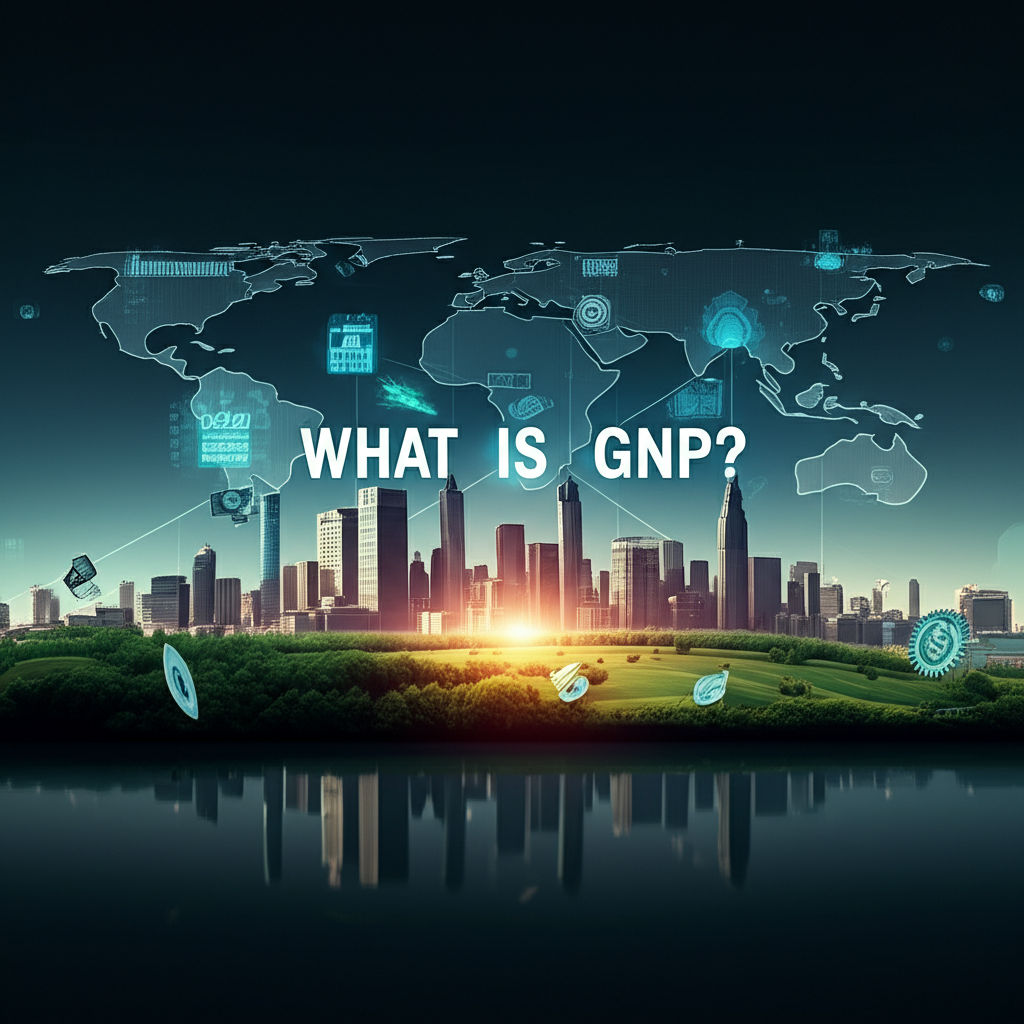Monopoly: Economics of Single Rule
Emily Willis

Photo: Monopoly: Economics of Single Rule
Monopoly: Unpacking the Economics of Single Rule
In the intricate tapestry of modern economies, competition is often lauded as the bedrock of innovation, efficiency, and consumer welfare. Yet, lurking within this ideal is a powerful counterforce: the monopoly. Far from being a mere board game concept, real-world monopolies represent a "single rule" over a market, where one entity dominates the supply of a particular good or service, fundamentally altering economic dynamics. Understanding the economics of single rule is crucial for consumers, businesses, and policymakers alike, as it profoundly impacts everything from prices and product quality to innovation and economic growth.
What Exactly is a Monopoly?
At its core, a monopoly (from the Greek "monos" meaning single, and "polein" meaning to sell) describes a market structure where a single seller or producer holds exclusive control over an industry or sector. This means there are no close substitutes for the product or service offered, and significant barriers to entry prevent other firms from competing.
Key characteristics of a market monopoly include:
- Single Seller: Only one company provides the product or service.
- Unique Product/No Close Substitutes: Consumers have no viable alternatives, making demand for the product relatively inelastic.
- High Barriers to Entry: It is extremely difficult for new companies to enter the market and compete.
- Price Maker: Unlike businesses in competitive markets that are "price takers," a monopolist has the power to dictate prices. They can set prices higher than in a competitive market to maximize their own profit.
While a "pure monopoly" with 100% market share is rare in practice, given government regulations, the term often applies to firms with significant market power, typically controlling over 25% of the market share.
How Do Monopolies Form?
The emergence of a single rule in an economy isn't accidental; it's typically a result of strategic advantages or structural market conditions that create robust barriers to entry. These barriers solidify the monopolist's position, making it nearly impossible for new entrants to challenge their dominance.
Common ways monopolies form include:
- Economies of Scale (Natural Monopolies): In some industries, the cost of production per unit decreases significantly as output increases. This often involves high fixed costs for infrastructure. For instance, it's more efficient for a single company to manage a city's water supply or electricity grid than to have multiple competing networks. These are known as natural monopolies, where one firm can serve the entire market at a lower cost than two or more firms could.
- Control of Essential Resources: A company that controls a scarce physical resource vital for production, for which there are no close substitutes, can establish a monopoly. A historical example is De Beers' control over diamond mining.
- Intellectual Property Rights (Legal Monopolies): Governments can grant exclusive rights through patents, copyrights, and trademarks. Patents, for example, give inventors a monopoly on their invention for a limited period, incentivizing research and development. Pharmaceutical companies often rely on patents to protect their significant investments in drug development.
- Government Grants/Public Monopolies: In some cases, the government itself grants exclusive rights to a single firm or operates the service as a public monopoly. Public utilities like energy or water supply are common examples. Historically, the U.S. Postal Service held a legal monopoly on first-class mail delivery.
- Mergers and Acquisitions: Companies can achieve monopoly power by acquiring competitors, eliminating market competition. The merger of Kraft Foods and H.J. Heinz Company is an example of consolidation, though not necessarily a monopoly.
- Aggressive Business Practices: While often illegal, practices like predatory pricing (setting prices artificially low to drive out competitors) can lead to monopolization. Standard Oil in the late 19th century is a classic example of this.
The Economic Impact of Monopolies: A Double-Edged Sword
The "single rule" of a monopoly can have profound and often negative economic impacts, though some argue for potential benefits in specific circumstances.
Negative Impacts
Economists generally agree that monopolies often do more harm than good, particularly for consumers and overall economic welfare.
- Higher Prices and Reduced Consumer Choice: Without competition, monopolists can set prices significantly higher than in competitive markets, leading to a decline in consumer surplus. Consumers are left with no alternative but to pay the monopolist's price, regardless of quality or service.
- Lower Quality and Reduced Efficiency: Competition drives companies to innovate, improve products, and offer quality customer service. In a monopoly, this incentive is often diminished. A monopolist may produce inferior products or allow costs to increase without fear of losing customers.
- Stifled Innovation: With little competitive pressure, there's less incentive for a monopoly to invest in research and development or bring new products to market. This can slow economic growth and technological advancement.
- Income Inequality and Unfair Power Dynamics: Monopolies can generate significant profits for their owners while potentially exploiting suppliers, workers (by paying lower wages), and customers. Their substantial economic power can also translate into political influence, shaping policies that further benefit the monopoly at the expense of others.
- Limited Output: Monopolists may limit production to drive prices even higher, leading to allocative inefficiency where consumer needs are not fully met.
- Job Losses: Mergers that lead to monopolies can sometimes result in job losses due to consolidation and reduced need for overlapping functions.
Potential (Limited) Benefits
While generally viewed negatively, some arguments are made for potential benefits, particularly in the case of natural monopolies or specific industries.
- Economies of Scale: Monopolies, especially natural monopolies, can achieve lower average costs of production due to their large scale. In theory, these cost savings could be passed on to consumers, though this is not always the case without regulation.
- Investment in R&D: The substantial profits generated by monopolies could be reinvested into significant research and development, leading to breakthroughs that smaller, competitive firms might not be able to afford. However, as noted, the incentive to do so without competition is often weak.
- Price Stability: In the absence of price wars, monopolies can offer stable and predictable pricing, which might benefit other businesses and consumers who prefer certainty.
- Export Revenue: Large monopolistic firms, particularly in technology, can generate substantial export revenue for their home countries.
Government Intervention: Taming the Single Rule
Given the potential for market failures and consumer exploitation, governments worldwide intervene to regulate or prevent monopolies. The goal is to preserve competition, protect consumers, and ensure a healthy economic environment.
Key government interventions include:
- Antitrust Laws and Legislation: These laws are designed to prevent monopolies from forming and to break up existing ones that engage in anti-competitive practices.
- Sherman Antitrust Act (1890): The first federal legislation in the U.S. to outlaw trusts (precursors to monopolies) and prohibit price-fixing and collusion.
- Clayton Antitrust Act (1914): Created rules for mergers and acquisitions and addressed anti-competitive practices.
- Federal Trade Commission (FTC) Act (1914): Established the FTC, a major regulatory body that monitors business activities and enforces antitrust laws.
- Antitrust enforcement aims to increase economic activity, employment, and wages by fostering competition.
- Regulation of Mergers: Governments scrutinize proposed mergers and acquisitions to ensure they don't lead to excessive market concentration or reduce competition significantly.
- Price Controls/Price Capping: For natural monopolies (like utilities), governments often regulate prices to prevent exploitation. This can involve setting prices based on average costs or a rate of return to ensure the company covers its costs without excessive profits.
- **Promoting Competition
Latest ✨
View Allsustainable living and provides practical tips for integrating eco-friendly practices into daily life. It emphasizes the benefits of reducing environmental impact, combating climate change, conserving resources, saving money, and living a healthier life.
Emily Willis
AI is no longer a futuristic concept, it is shaping our world at an unprecedented pace. In 2024 and beyond, AI trends are likely to dominate in various industries. Generative AI is expected to revolutionize content creation, design, and product development. In healthcare, AI will lead to personalized medicine, drug discovery acceleration, improved diagnostics, and remote patient monitoring.
Emily Willis
Future-proof your career with micro-credentials & digital badges. Gain targeted skills fast & stay relevant in a rapidly changing world.
Emily Willis
Unlock the potential of flexible school schedules! Understand benefits, challenges, types, and real-world examples for modern education.
Emily Willis
Business
View All
June 9, 2025
Craft a Winning Pitch DeckCraft a winning pitch deck! Learn to transform your vision into a compelling presentation that captivates investors & unlocks opportunities.
Emily Willis

June 8, 2025
Gain Competitive Edge in Any MarketMaster competitive advantage! Discover actionable strategies for business growth, market leadership, and differentiation in any market.
Emily Willis

June 8, 2025
Handle Complaints EffectivelyMaster the art of handling complaints effectively. Learn the psychology, actionable steps, and how to turn feedback into opportunities for growth and stronger r...
Emily Willis
Economy
View AllUncover the dynamic relationship between tariffs and global trade patterns. Explore how tariff changes reshape trade flows, impact consumers and businesses, and drive strategic adaptations in supply chains and markets. Discover insights from real-world cases and learn strategies for businesses to thrive in this evolving landscape.
Read MoreFiscal policy: The government's powerful tool of taxes & spending that shapes the economy, jobs, and your daily life. Essential citizen guide.
Read MoreBoost your business profitability! Discover how cost analysis empowers informed decisions, optimizes spending, and fuels sustainable growth.
Read MoreEntertainment
View All
August 5, 2024
Classic Films: Timeless Masterpieces in the Age of StreamingClassic films may seem outdated in today's world of instant gratification and endless streaming options, but they offer enduring stories, masterful storytelling, historical insights, technical innovation, and artistic value that surpass modern offerings. While classic films face challenges such as accessibility and pacing, there are ways to overcome these obstacles, such as using streaming services, visiting local libraries, attending film festivals, and utilizing online resources.
Emily Willis

August 4, 2024
The Evolution of Streaming Services Such as Netflix, Disney+, Hulu, and the Implications for the Traditional Entertainment IndustryThe rise of streaming services has revolutionized the entertainment industry, offering on-demand access to a vast library of content through internet-connected devices. Platforms like Netflix, Disney+, and Hulu have diversified their content libraries, reshaped consumer behavior, and challenged traditional distribution models. Technological advancements have enhanced streaming experiences, while economic and cultural implications have led to global market expansion and increased investment in original content production. The future of the streaming industry will be shaped by competition, convergence of media and technology, and the need for adaptation to changing consumer preferences. Embracing digital transformation and strategic partnerships will be crucial for stakeholders in navigating the evolving landscape of modern entertainment.
Emily Willis

August 4, 2024
Virtual Music Concerts: The Future of Live Performance?The music industry has seen significant changes in recent years, with virtual music concerts becoming a popular trend, especially due to the impact of the COVID-19 pandemic. Technological advancements have made virtual concerts more accessible and cost-effective, while also reducing the environmental impact of live events. However, challenges such as technical issues and the lack of physical presence remain. The future of virtual concerts may involve hybrid models that combine virtual and physical experiences, as well as continued technological innovation to enhance the quality of virtual performances. Building a sense of community and engagement will also be crucial for the success of virtual concerts moving forward.
Emily Willis
Health
View Allsleep for physical and mental well-being, discussing the benefits of sleep such as physical restoration, brain function, emotional regulation, concentration, and reduced risk of chronic diseases. It explains the different stages of the sleep cycle and provides guidelines for how much sleep individuals of different ages need.
Emily Willis
Heart disease is a leading cause of death globally, but early detection and prevention strategies can reduce its impact. This article discusses the importance of early detection, common risk factors, preventive measures, and lifestyle changes for heart health. Understanding heart disease, recognizing symptoms, and undergoing regular screenings are crucial. Common risk factors include high blood pressure, high cholesterol, diabetes, smoking, obesity, physical inactivity, and family history. Symptoms of heart disease include chest pain, shortness of breath, fatigue, irregular heartbeat, and swelling. Diagnostic tests and screenings include blood pressure measurement, cholesterol screening, blood glucose test, ECG, stress test, and imaging tests. Preventive measures include adopting a heart-healthy diet, regular physical activity, quitting smoking, managing stress, maintaining a healthy weight, and limiting alcohol consumption. Medications and treatment options may be necessary for individuals at high risk or diagnosed with heart disease.
Emily Willis
The healthcare landscape is being transformed by technological advancements, with telehealth and remote care providing convenient access to healthcare services. Artificial intelligence is revolutionizing diagnostics, personalized medicine, and drug discovery. Wearable technology is empowering patients to take control of their health.
Emily Willis
Trending 🔥
View All
1
2
3
6
7
8
9
Sports
View AllAugust 4, 2024
The Importance of Mental Training and Psychological Strategies in Helping Athletes Reach Their Peak Performance on the Field
Read MoreTechnology
View All
August 4, 2024
Latest Trends in Mobile Application Development
latest trends in mobile application development for 2024. These trends include the integration of 5G technology, artificial intelligence and machine learning, Internet of Things (IoT), augmented reality (AR) and virtual reality (VR), cross-platform development, mobile wallets and payment gateways, progressive web apps (PWAs), enhanced app security, voice search and integration, and sustainability and green mobile apps.

August 5, 2024
Challenges and Barriers in Adopting Blockchain Technology
Blockchain technology has the potential to revolutionize industries with its decentralized and transparent nature, but widespread adoption faces challenges such as scalability issues, interoperability, security concerns, regulatory uncertainty, lack of standards, cost and resource intensiveness, and user experience and education.

August 5, 2024
Top Skills Every Junior Software Developer Should Master in 2024
Meta Description: Discover the top skills junior software developers need to master in 2024 to excel in their careers. From coding languages to soft skills, this blog reveals the secrets to staying ahead in the dynamic world of software development.

August 4, 2024
The Metaverse: A Virtual World with Endless Possibilities
metaverse is a rapidly evolving concept that offers a network of interconnected 3D virtual spaces accessed through technologies like VR and AR.





















